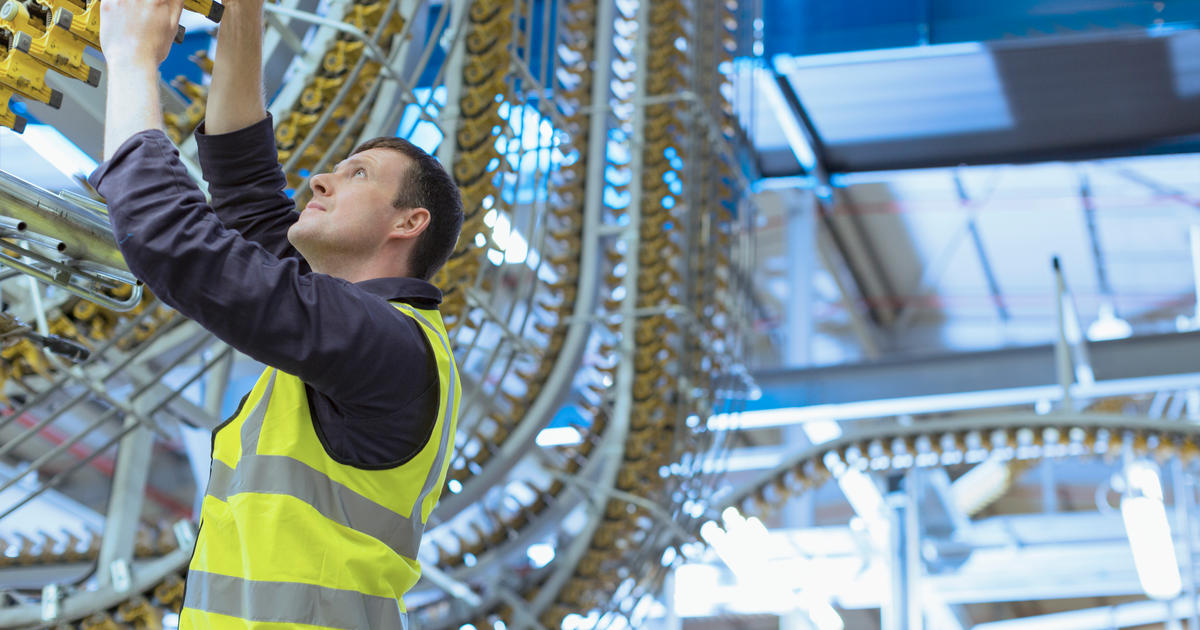The servitization megatrend is upon us.
Industrial machine manufacturing companies are adding service revenue streams and changing their business models, usually to augment but sometimes to replace product-based business, in an aim to win and retain their customers and markets. This, coupled with the trend of moving away from a linear economy to a circular one, is changing the thinking of leading manufacturers of industrial machinery.

What is servitization, and circularity?
Servitization
There are many levels in servitization, from simply adding a service to a product sale to the goal of selling a service and not a product. For example, selling tons of earth moved or hours working, removing revenue spikes, and keeping a regular predictable income stream, plus the obvious, customer retention.
Circularity or the Circular Economy
For many years manufacturers have built businesses on a linear economy of Take, Make then Dispose, but depleting resources, supply chain disruptions and the drive to a more sustainable business means moving to a model where materials are kept in the economy for as long as possible, by reusing, remanufacturing and recycling over and over again. Manufacturers of photocopiers have been doing it for years, sometimes reusing and remanufacturing up to 7 times, each time giving the same warranty as new.
Servitization changes the OEM sale and aftermarket spares business
When I started my career in engineering I worked for a major industrial manufacturer of valves, pumps axles and gearboxes for industrial machines.
As a works manager, it wasn’t hard to see why I had to give priority to the spares department. Not only was it to keep our products in service, keep our customers happy, but also to generate the lucrative margins from the spare parts business.
Single-digit profit on the original equipment and double, if not triple on spares! But servitization changes all that… when manufacturers start charging for earth moved, water pumped or hours of service, suddenly keeping the asset in working order is now their cost. So, what are manufacturers of industrial machines doing?
#Servitization adopters show #service revenue 30 percent larger than peers and five times more opportunity to accelerate annual top line growth above 5 percent. Learn more here. ? https://t.co/SJSCulHHOd
— IFS (@ifs) May 13, 2020
Design
One key consideration when adopting a servitization strategy is to stop designing for limited life and to support an aftermarket spares business since the aim is to avoid spare parts and repairs as they are now the manufacturer’s cost. Manufacturers are more interested in keeping their assets running and keeping the revenue flowing without hiccup.
And that means three things for design:
Designing for life – Paying more attention to the areas of the product that could fail and using better design principles. Replacing cheap bearings with timeless self-lubricating journal bearings, incorporating mechanical seals and not perishable rubber, incorporating replaceable wear surfaces to ease re-manufacture and using standard fixings and where possible clip assembly solutions.
Designing for repair –Designing a product so that it can be repaired quickly and easily. Whilst this may add cost initially, in terms of the total lifecycle cost, it actually reduces it.
Designing for re-X – Utilizing the waste hierarchy in the design process to remove, reduce, reuse, remanufacture/repair, recycle and recover materials and components and keep ownership and value.
Connected Assets
Enabling technologies are also making servitization more feasible. The Internet of Things (IoT) is enabling companies to add sensors to their products and use the resulting data to automate everything from re-order, to organizing returns and replacements. More importantly, the data enables focussed asset management, avoiding costly unexpected breakdowns and the associated cost of spare parts and service engineers.
Remanufacturing
When adopting a servitization model, equipment manufacturers now own the assets, so when they begin to fail or reach end of life it is imperative to retain as much of the product as possible.
Why procure new raw castings in the first place and machine an expensive housing when the one just returned can be made new at a fraction of the cost? Remanufacturing must not be confused with repair, in a repair scenario the equipment is simply made to work by replacing the broken components, whereas in a re-manufacturing scenario all components that have worn are replaced and the same warranty as new is issued.

Reverse logistics
Probably one of the most difficult problems for companies adopting a servitization or circular model is getting the products back so they can be re-used, re-manufactured etc. This is where reverse logistics becomes important. Ensuring it is advantageous for the customer to return the products and making sure they are controlled so that they can be used again.
Often the return is not as simple as returning to the supplier and may need to go back to the OEM, or a subcontractor who is performing the remanufacturing. There are many good examples already like cosmetics customers being rewarded for returns, or ink cartridges being given a new lease of life.
Summary
Servitization and circularity offer adopters considerable cost savings, as well as the obvious customer retention. However, the process needs thorough risk analysis and planning, not to mention integrated software to support and manage the process. But the biggest barrier may not be any of these.
Buying new is a mindset difficult to break and it may be some time before we accept that a re-manufactured product with the same warranty as new is equal in all ways to a new one.
Learn more on the Manufacturing, Technology and the Circular economy page.
Do you have questions or comments?
We’d love to hear them so please leave us a message below.
Nirmal Industries
Hey Nice Post
Nirmal Industries
Hey thanks for useful information